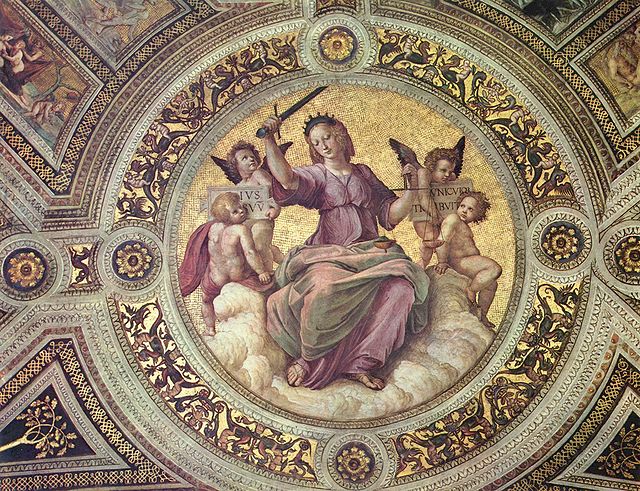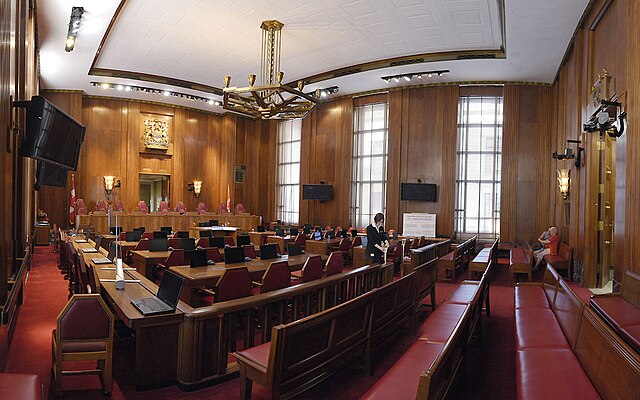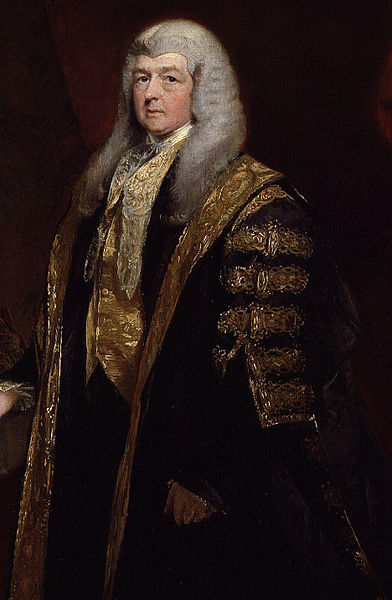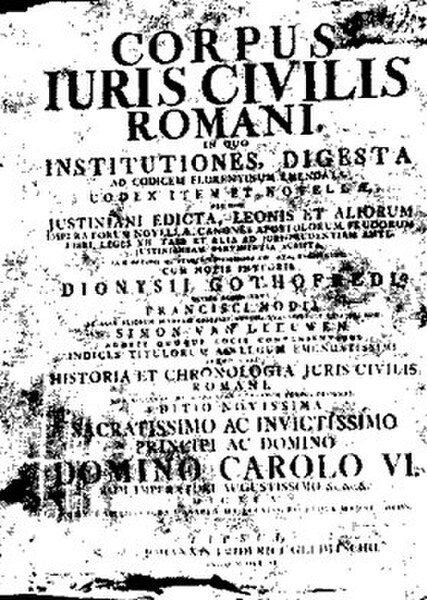In English law, natural justice is technical terminology for the rule against bias and the right to a fair hearing. While the term natural justice is often retained as a general concept, it has largely been replaced and extended by the general "duty to act fairly".
A tondo of an allegory of justice (1508) by Raphael in the Stanza della Segnatura (Room of the Apostolic Signatura) of the Apostolic Palace, Vatican City
The courtroom of the Supreme Court of Canada in Ottawa, Ontario. In 1999, the Court ruled in Baker v Canada (Minister of Citizenship and Immigration) that the requirements of natural justice vary according to the context of the matter arising.
A portrait of the Lord Chancellor, Lord Cottenham (Charles Pepys, 1st Earl of Cottenham, 1781–1851), by Charles Robert Leslie. In Dimes v Grand Junction Canal (1852), his Lordship was disqualified from hearing a case as he had a pecuniary interest in the outcome.
A hearing of the International Court of Justice in 2006 presided over by its president, Her Excellency Dame Rosalyn Higgins. A fundamental aspect of natural justice is that before a decision is made, all parties should be heard on the matter.
In law, common law is the body of law created by judges and similar quasi-judicial tribunals by virtue of being stated in written opinions.
A view of Westminster Hall in the Palace of Westminster, London, early 19th century
A 16th century edition of Corpus Juris Civilis Romani (1583)
USCA: some annotated volumes of the official compilation and codification of federal statutes.
The Constitution of India is the longest written constitution for a country, containing 395 articles, 12 schedules, numerous amendments and 117,369 words.








